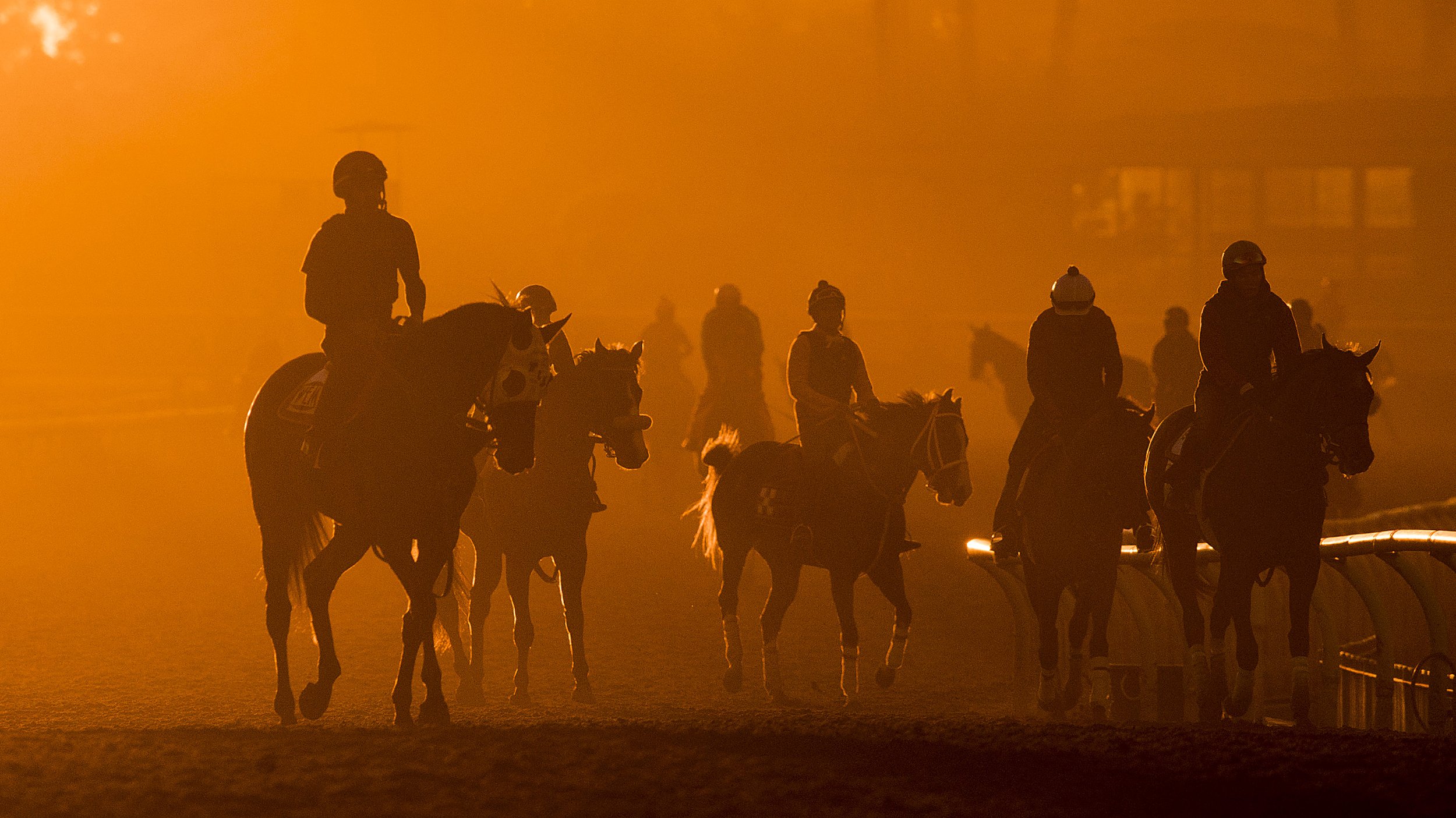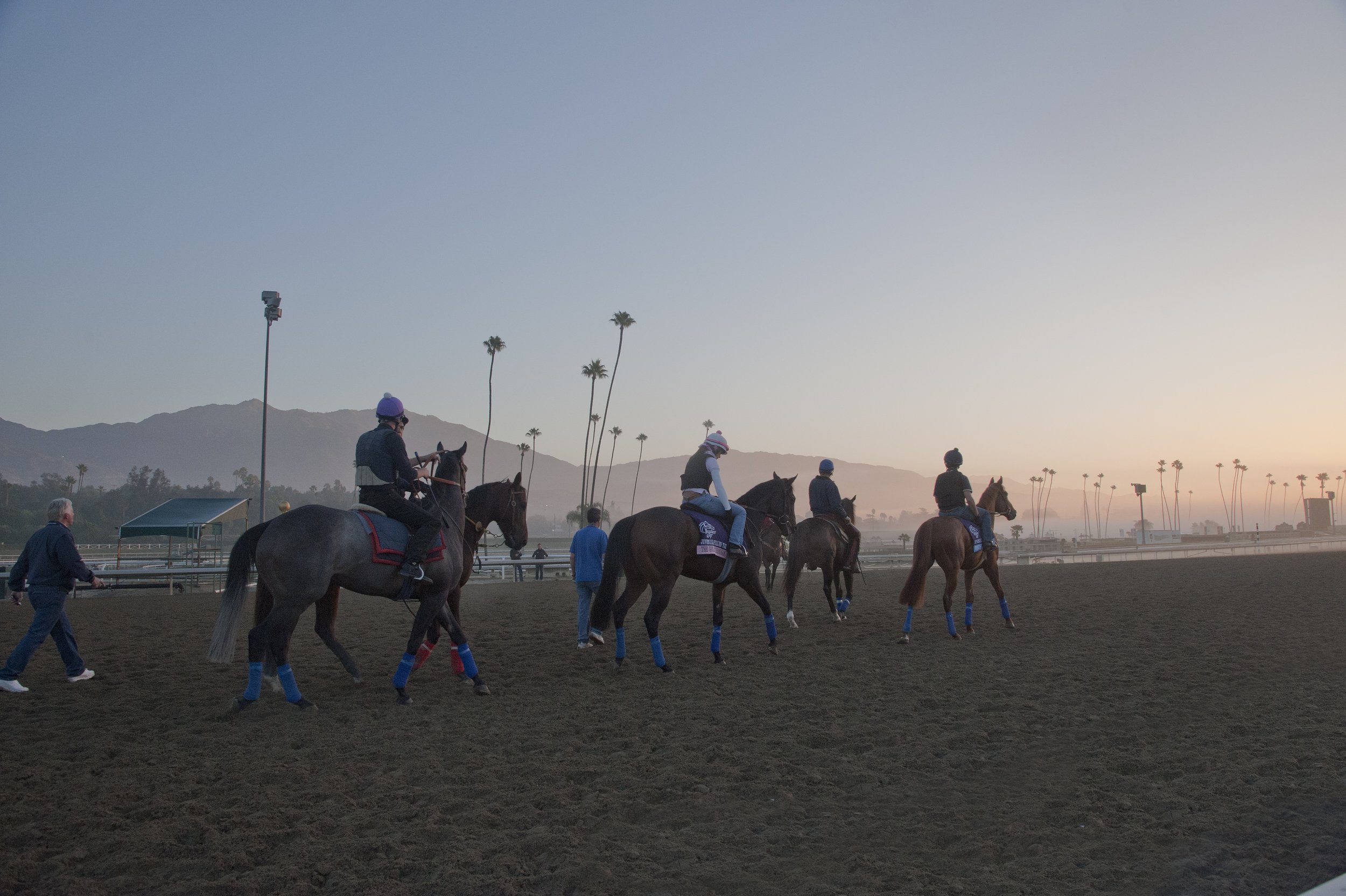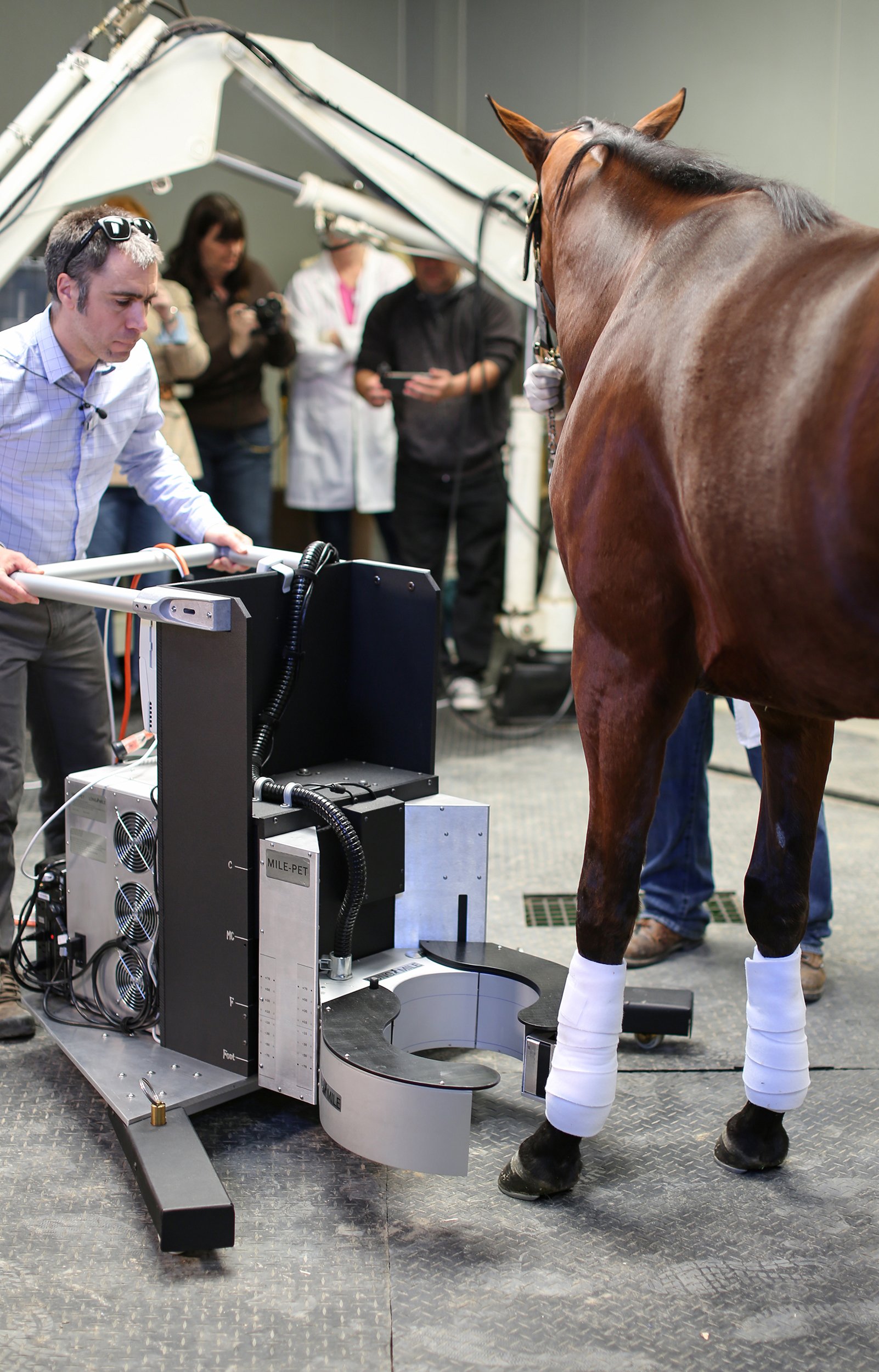A safer Santa Anita - How the Santa Anita vets & trainers made a positive difference in 2020
By Ken Snyder
Some media observers have opined that bad journalism is not just reporting inaccuracies or things made up to suit a narrative, but also what isn't reported. From the perspective of many people in the racing industry, especially in Southern California, the absence of even the slightest acknowledgment of the safety turnaround at Santa Anita in 2020 is an example of the latter.
Here are the facts with one apples-to-apples comparison of statistics between 2019—when Santa Anita suffered a horrific spate of fatalities—and last year. According to The Jockey Club's Equine Injury Database, there were 13 racing fatalities on the dirt track in 2019 at Santa Anita. In 2020, there were zero racing fatalities—zip, nada, none—on the dirt track. Pick your adjective to describe that: incredible, astonishing, miraculous? The public is still waiting, by and large, on adjectives, or anything else for that matter, from the media.
Looking at all statistics, the dirt stat is no anomaly. With training fatalities, there were 17 in 2019 and 10 in 2020. Only with turf racing are the numbers close; in fact, they're even—six turf fatalities in both 2019 and 2020.
Hall of Fame Trainer Richard Mandella is perhaps charitable when he says the absence of reporting is "suspicious."
The one indisputable fact is that animal rights activists want racing shut down, he said. Why the governor and the politicians "jumped on board last year," as Mandella states it, is anybody's guess.
He speculates that a decline in marketing spending by the California racing industry—advertising in media outlets—may be at the root of not reporting the turnaround. Perhaps People for the Ethical Treatment of Animals (PETA, the principal anti-racing activist group) exert powerful political pressure (and funding to political campaigns). Maybe public perception crafted by media reporting (and "not reporting") impacts things at the ballot box far more than those in racing can imagine.
There is no question that a cluster of fatalities like those that occurred in 2019 at Santa Anita will produce an outcry from the public, and deservedly so. "We were warned that if we didn't get it straight," referring to 2019, "that they were going to 'cut our cord' and stop racing," said Mandella.
Bullet dodged. Mission accomplished. Racing continues. So, what was the story-behind-the-story of the success at Santa Anita in 2020?
Mandella expresses the principle behind the solution: "Two heads are better than one." In actuality, a training inspection program established by The Stronach Group (TSG) brought to bear not just two heads but four veterinarians led by TSG Equine Medical Director Dr. Dionne Benson.
As many as three vets hired by Santa Anita and reporting to Benson space themselves around the track every morning, watching workouts and coordinating with another vet in the barn area. They will observe all the horses but particularly those on a daily list of horses deemed at "elevated risk," as Benson terms it, who will breeze that day. A horse exhibiting lameness, whether it is on the list for close observation or another horse merely out for a gallop, will be examined by the vet serving backside duty that day once it leaves the track. Often that vet will meet a horse and exercise rider at the barn and examine the horse while still under saddle.
An on-track vet will sometimes radio an outrider to get a horse off the track immediately if it appears to be in distress. The vet will then call the trainer to alert them to a possible injury and have the barn-area vet waiting as well. On-track vets have even followed a distressed horse and rider from the track to the barn.
The program began informally in 2019 when the state shut down Santa Anita because of the fatalities. Benson came onto the Santa Anita racetrack in May 2019 and had the foresight to assign Santa Anita vets with downtime to watch training.
"Prior to that time, the responsibilities of the track and training were the track surface, making sure that it was well taken care of, setting the training hours, and providing outriders to catch loose horses. We really felt we could do a lot by adding some oversight and supervision to training.
"We really refined it as we proceeded, and it progressed to a more active role for the veterinarians."
The refinements and staffing meant an unprecedented degree of inspection and effort in terms of time and money. "When you're watching horses one day a week or one day a month, it's not the same as watching five days a week for five hours," said Benson. Santa Anita veterinarians rotate days off to make certain of training coverage daily. "You start to know the horses, and because we also do physical inspections on horses in training, we have a really good idea of which ones we're most concerned about."
Benson said her vets develop "a good sense of the horses. They'll say, 'Oh, that's so and so. He looks great today.' They not only have the ability to pick out unusual movement patterns for the horses, but they also know enough about the horses that each one has a profile in their mind."
Inspection is not a matter of random selection. A requirement for Santa Anita trainers mandates they must register any horse they intend to breeze 48 hours before that workout. A horse working Wednesday, for example, requires registration with the racing office on Monday. The office will compile expanded past performance data that includes races and workout times plus injury and vet's list history. The office passes these on—usually 70 to 80 pages—for Benson or a member of her team to review. The reviewer will apply as many as eight criteria to determine horses that may be at higher risk for injury and fatality. Things looked for include inactivity for more than 90 days, unusual work patterns, horses coming into California from another state, and, as one might expect, horses that have a history of being on the state veterinarian's list for unsoundness.
Also, a horse scratched from a race, who flipped in the gate or that finished 20 lengths behind in a race are additional things noted in reviewing past performance and history, said Dr. Jay Deluhery, a Santa Anita inspector.
Of, say, 200 horses scheduled for workouts, an average of 50 makes the "watch list" for close observation while on the track, according to Deluhery. The team will then divide and examine each horse on the following day. Vets will flex and palpate the limbs and have the horse jog in the shedrow or just outside it. "From there, they can make the decision of, 'Do I want this horse to breeze or not?'" he added.
"In some cases, we'll say, 'Yeah, this horse is good,' or we want more information about this horse. 'It's had a long layoff. Why?' Or, 'I want to talk to your vet about this horse, or you need this diagnostic before you can breeze.'"
"We maybe see a couple to five horses a week that we actually turn down for works.
"In some cases, we'll say, 'Come and jog in front of the vet on the track under tack.' Sometimes you see different information there."
If the workout registration and subsequent inspections sound extreme, it has gained acceptance by Santa Anita trainers, by and large. "I think learning is setting in that maybe mistakes were being made, and we're learning to correct them," Mandella said.
Benson estimates that since the program's inception, the team has performed 3,700 to 3,800 examinations of horses both routinely and before breezes at Santa Anita.
An unexpected result of the program beyond reduced fatalities is what Benson calls a "culture change" among the racing community at Santa Anita. "We have trainers who are more willing to go directly to diagnostics instead of saying, 'Let's see if we can medicate the horse through this problem.'"
Deluhery added, "They are seeing the value of having more MRIs [magnetic resonance imaging] and increasing PET scans [also for tissue and organ functioning], and even more nuclear scintigraphy [essentially a bone scan] on the horse."
"Some of them have taken the initiative, and we don't have to tell them; they just do it. Horses with bone scans? It's unprecedented. They're doing it on their own."
Benson added, "There are always going to be outliers, but the majority of the trainers that we have at Santa Anita, San Luis Rey and Golden Gate Fields [all California TSG facilities] really want their horses to be healthy and safe; and they don't want to be the person who has a horse that's injured."
Important to the inspection is not only the cooperation of trainers but private vets employed by trainers. Whether intended directly or not, the TSG inspection program has "instituted private vets doing exams prior to works and prior to entry," said Benson. "We've actually involved the veterinarians to do things that they had not been doing, but they're reaping the benefits.
"It's a very collegial atmosphere for the most part. I mean, no one wants to have their horse scratched. No one wants to be told, ‘Your horse has to go and have this diagnostic,’ but instead of the pushback that we might have gotten two years ago, people now are like 'Absolutely, we'll do the right thing,'" said Benson.
Deluhery believes acceptance by trainers was the key factor in the success of the program. "I expected them to either accept this or the inspection program would die," he said. "Now that they've seen the results, they're wanting to cooperate, and they're happy to show me any horse in the barn."
He believes trainers have seen the value in replacing guessing, hunches and risk-taking with "putting a little science into things" where horse health is concerned. Too, he believes they see "the economics of it on a big scale." A healthy horse will be a more productive horse with a potentially maximized racing career.
The inspection program has drawn the interest of others in racing. "I've had a few calls with different regulators, different individuals, different jurisdictions; and I think there is a desire to do it," said Benson. Currently, TSG has veterinarians watching training at all of its California tracks and is working to expand the full program elsewhere.
"It is costly. Hiring three to four vets per track to cover your days is not inexpensive, but I think it is an investment that is well worth it. The more interventions, the more eyes we have on these horses, the better we can see something before it happens."
Whether covered or ignored by those professing to be journalists, one thing is inescapable and captured by Mandella in an overview of the inspection program: "The facts are there. It's worked."
Dr. Benson and her team are, without question, pleased with the success of the inspection program and look for continuing improvement statistically. One unrecorded statistic, however, means more to them than anything: horses that, because of the workout inspections and examinations, have been retired.
She recounted just one story among many: "I had a vet come up to me and say, 'You know, there was a horse that was on the track that your vets kept flagging. They just kept saying, 'We don't like the way it moves.' I could never really see it as that lame. You guys kept at it so I finally sent the horse for a bone scan and sure enough, it had a humeral stress fracture brewing.'"
Horses with stress fractures, with time and therapy, can come back. In this case, the owners and trainer elected to retire the horse.
"Those kinds of things have certainly happened more than once, but that was one that really stuck out to me because humeral stress fractures are really hard to identify by a private vet. This guy trusted our vets," said Benson. "If they're saying there is something wrong, then there's probably something wrong. Let's do something that probably saved that horse's life."
BUY THIS ISSUE IN PRINT OR DOWNLOAD
ISSUE 60 (PRINT)
$6.95
ISSUE (DIGITAL)
$3.99
WHY NOT SUBSCRIBE?








